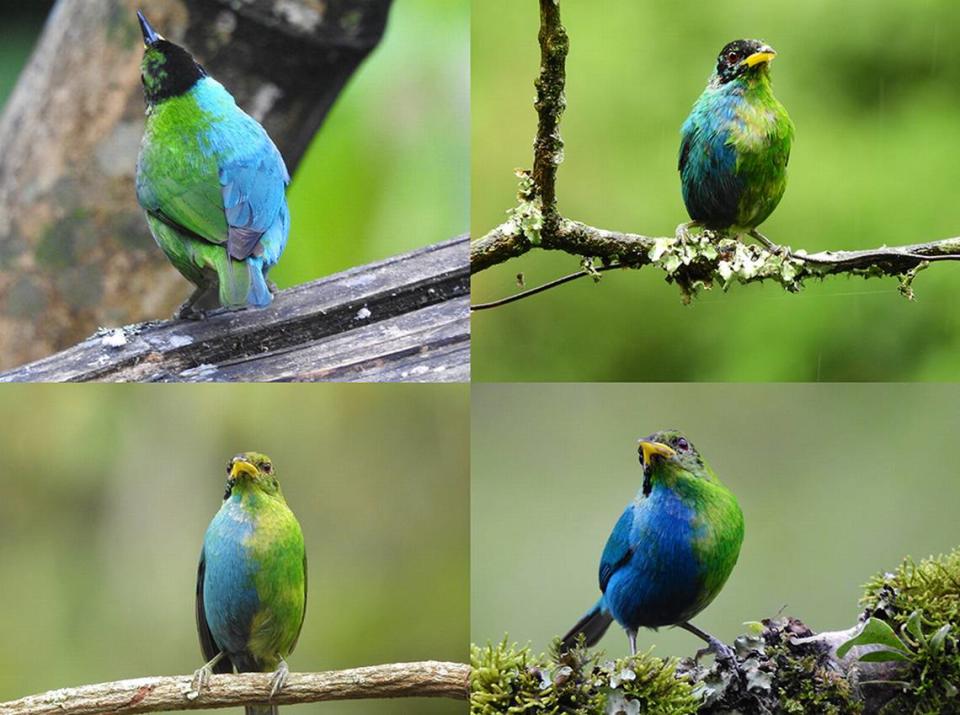Extremely rare bird — half-male, half-female — spotted in Colombia, video shows
In a forest of Colombia, a multi-colored bird waited its turn to approach the bird feeder. When it finally came close, the onlooking scientists were stunned.
On its left side, the green honeycreeper bird had the “grass green” coloring of a female — but on its right side, it had the “aqua blue” coloring of a male, according to a study published Dec. 8 in the Journal of Field Ornithology.
Researchers identified it as an extremely rare case of bilateral gynandromorphy.
“Bilateral gynandromorphy is the condition in which one side of an organism exhibits male characters and the other female,” the study said. “The phenomenon is thought to arise as a result of an error during egg meiosis (cell division), with subsequent double fertilization by separate sperm.”
Photos show the half-male, half-female green honeycreeper. Its coloring is distinctly split down the middle of its body. The division is not perfect, and a few feathers bleed onto the other side.

“It is very striking; I was very privileged to see it,” Hamish Spencer, the study’s lead author, told the University of Otago in a Dec. 12 news release.
Researchers observed, photographed and filmed the rare bird for 21 months between October 2021 and June 2023, the study said. During this time, it frequented a feeding station in Villamaría, allowing researchers to study its behavior.
The unique green honeycreeper “was inclined to be a loner,” researchers said. It avoided other green honeycreepers and often waited until others left before approaching feeding stations. But it was “not differentially harassed” by other birds.
A short video shared by researchers on figshare shows the rare bird watching its surroundings.
Researchers said it was “impossible to tell” what the half-male, half-female bird’s internal anatomy was but, based on other examples, they expected its organs to match its external coloring.
Similarly, they could not tell if the rare bird was able to reproduce but doubted it would based on its general avoidance of other green honeycreepers.
Other bilateral gynandromorph birds have been seen in stable mating pairs, reproducing and behaviorally functioning as both males and females, the study said. These behaviors typically varied with each individual bird.
“Many birdwatchers could go their whole lives and not see a bilateral gynandromorph in any species of bird,” Spencer said. “The phenomenon is extremely rare in birds.”
Researchers said while this is the second time the phenomenon has been documented in a green honeycreeper, it marks the first such discovery in “a living bird.”
The research team included John Murillo, Edwin Campbell-Thompson, Thomas Bishop, Caroline Beck and Hamish Spencer.
High school student cracks open rock during class — and discovers new species in Japan
Boaters spot orcas ‘zig zagging’ in California. Then came a ‘jaw dropping’ attack
Rare creature spotted in Colorado mountains is a 1-in-100,000 find. See stunning photo

